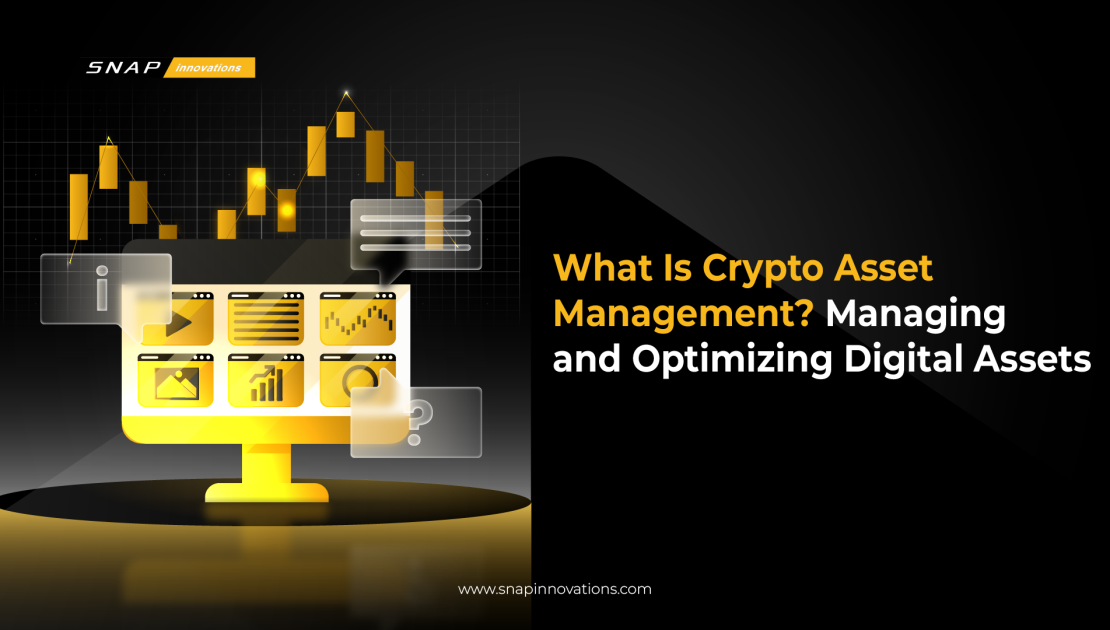What Is Crypto Asset Management? Managing and Optimizing Digital Assets

With the rapid rise of cryptocurrencies and blockchain technologies, managing digital assets has become a critical concern for individuals, institutions, and enterprises alike. Crypto asset management encompasses a set of strategies and practices aimed at safeguarding, optimizing, and enhancing the value of digital currencies and tokens. As crypto markets mature, investors are no longer simply buying and “hodling”; they’re leveraging advanced tools, analytics, and services to actively manage their portfolios.
This article will explore the concept of crypto asset management in-depth: what it means, why it matters, and how it’s done. We’ll examine definitions, key processes, tools, comparisons, visual data, detailed strategies, and practical tips. By the end, you’ll have a clear roadmap to understanding and implementing effective crypto asset management for yourself or your organization.
What Is Crypto Asset Management?
 Crypto asset management refers to the systematic process of handling and optimizing a portfolio of digital assets—such as cryptocurrencies, tokens, and blockchain-based financial instruments—using professional-grade strategies and tools. Unlike traditional asset management, which deals with securities like stocks or bonds, crypto asset management must contend with a highly volatile, decentralized, and rapidly evolving ecosystem. It blends technical mechanisms (e.g., blockchain wallets, smart contracts) with financial risk management practices like diversification, rebalancing, and yield-generation strategies.
Crypto asset management refers to the systematic process of handling and optimizing a portfolio of digital assets—such as cryptocurrencies, tokens, and blockchain-based financial instruments—using professional-grade strategies and tools. Unlike traditional asset management, which deals with securities like stocks or bonds, crypto asset management must contend with a highly volatile, decentralized, and rapidly evolving ecosystem. It blends technical mechanisms (e.g., blockchain wallets, smart contracts) with financial risk management practices like diversification, rebalancing, and yield-generation strategies.
At its core, effective crypto asset management is about balancing three primary objectives:
- Security: Ensuring assets are stored, authenticated, and managed securely—typically via hardware wallets, multisignature setups, and cold storage.
- Performance: Maximizing returns through active strategies such as staking, yield farming, lending, automated trading, and liquidity provision.
- Compliance and Reporting: Monitoring holdings, tracking on-chain activity, generating tax-ready reports, and adhering to jurisdiction-specific regulatory requirements—crucial in today’s evolving legal landscape.
Types of Crypto Asset Management
(Mini description followed by at least two paragraphs each for enumeration)
Crypto asset management varies widely depending on the investor’s profile, goals, and risk appetite. Here are four broad types:
A. Self‑Managed Portfolios
The investor personally oversees all aspects of their portfolio—research, execution, security, and recordkeeping.
This route gives you full control, flexibility, and oversight. You choose wallets, custodians, trading platforms, staking pools, DeFi apps, etc. You also make every decision—from buying Bitcoin on a DEX to setting up yield strategies via smart contracts.
The trade-off? You bear all responsibility for security (e.g. preventing hacks or lost keys), research, and profitability. Mistakes can be costly. Proper tooling—like hardware wallets, portfolio trackers, tax software—is essential.
Also read: AI-Powered Smart Contract Auditing: Revolutionizing Blockchain Security
B. Robo‑Advisory Crypto Services
Fully automated platforms that deploy algorithmic strategies for diversification, rebalancing, and yield generation.
Robo-advisors use your risk profile (e.g. conservative, moderate, aggressive) to allocate assets automatically. They may rebalance weekly, invest in staking protocols, or employ simple data-driven trading. Fees are generally lower than traditional advisory services, often charged as a percentage of assets under management (AUM).
This solution suits investors who want low-effort access to digital asset opportunities. The drawback: less transparency and limited control over specific coin choices. Also, algorithmic performance may not rival custom, expert-driven strategies in certain conditions.
C. Institutional Crypto Asset Management
Full-scale services catered to hedge funds, family offices, endowments, or corporate treasuries.
Institutional services include secure custodians (e.g. Fireblocks, BitGo), prime brokerage solutions, OTC trading desks, smart custody insurance, and legal/tax advisory.
These players aim for institutional-grade security and compliance, offering features like audit trails, insurance coverage, and counterparty risk assessments. Performance is often measured by net-of-fees returns using advanced strategies like market-making, cross-exchange arbitrage, and structured yield.
D. Hybrid/Family Office Models
A combined approach—self-directed investment enhanced with consultancy tools and partially outsourced elements.
For example, a sophisticated crypto investor may self-manage the portfolio but engage on-call analysts or advisors for complex strategies like yield optimization or tax structuring.
This model offers more autonomy than institutional services, but with professional backup. Costs are often less rigid than fully outsourced models; however, oversight is still required to ensure advisors act in alignment with your risk tolerance and compliance needs.
Core Components of Crypto Asset Management
 Effective crypto asset management is built on five essential pillars—each playing a critical role in portfolio success:
Effective crypto asset management is built on five essential pillars—each playing a critical role in portfolio success:
Security & Custody
Managing digital assets starts with safeguarding them. Without secure custody solutions, all other strategies are moot.
- Hot Wallets: Online wallets for day-to-day trading—but inherently exposed to cyber risk.
- Cold Storage: Offline methods (e.g., hardware wallets, paper backups) designed to protect against internet attacks.
- Multisignature and Smart Custody: Advanced setups requiring multiple keys to authorize transactions.
- Custodial Services: Institutional options like Fireblocks or Ledger Enterprise, offering secure key management with insurance coverage.
Security isn’t just about technology—it’s about protocols: frequent key audits, access logs, and emergency recovery plans. Teams should run drills simulating lost keys or breaches.
Portfolio Strategy & Diversification
Spreading investments strategically across asset types, sectors, and risk levels helps to manage volatility and improve risk-adjusted returns.
- Coin Diversification: Balancing core assets like BTC/ETH with midcaps, altcoins and tokens aligned to specific sectors.
- Protocol Diversification: Engaging across DeFi protocols, liquidity pools, lending platforms to spread smart-contract risk.
- Temporal Hedging: Using options or futures to hedge open positions during volatility spikes.
Rebalancing—e.g., shifting back to targets whenever one position outpaces others—is fundamental in market correction scenarios.
Active Yield & Income Strategies
Earning passive returns through crypto-specific income streams is a major growth driver:
- Staking: Locking tokens in Proof-of-Stake networks (like ETH 2.0 or BNB) for network validation rewards.
- Liquidity Provision: Supplying tokens to decentralized exchanges or AMMs, capturing fees but exposing providers to impermanent loss risk.
- Lending/Borrowing: Utilizing platforms like Compound or Aave to moonlight assets for interest income or leverage.
- Derivatives & Structured Products: Using options strategies like covered calls or yield-enhanced vaults (e.g., Yearn, Ribbon) to fine-tune exposure.
These strategies offer compounded returns but typically increase exposure to protocol, smart-contract, and economic risks.
Trading & Rebalancing
Liquidity events and market volatility drive rebalancing and trading activity. Many managers rely on algorithms and bot frameworks.
- Signal-Driven Trading: Technical indicators like MACD, RSI, VWAP guide entry/exit decisions.
- Dollar-Cost Averaging (DCA): Regular investments—say weekly—reduce the risk of ill-timed large buys.
- Rebalancing Automation: Tools like Shrimpy auto-adjust holdings when allocations drift beyond thresholds.
- Market-Making & Arbitrage: For experienced participants, deploying neutral spreads across venues or time zones reduces window risk.
Tax & Reporting
Crypto asset managers must maintain detailed transaction records for each blockchain movement: trades, staking rewards, transfers.
- Tax Software: Tools like CoinTracker, Koinly, or CryptoTaxCPA that import wallets and file tax returns.
- Audit Trails: Verified and timestamped record systems for institutional oversight or compliance audits.
- Multi-Jurisdictional Compliance: Handling VAT in Europe, income tax in the U.S., local remittance laws in Asia-Pacific.
Non-compliance can trigger hefty fines, especially in jurisdictions actively ramping up enforcement of digital asset taxation.
Comparison of Crypto Asset Management Tools
There’s a rich ecosystem of tools and platforms facilitating crypto asset management. Below is a comparison of selected popular solutions covering features, costs, and target user bases.
These tools vary in target users—from institutional and enterprise-grade platforms like Fireblocks to self-service portfolio trackers like CoinStats. Your choice depends on size, sophistication, security needs, and budget. Below is a breakdown highlighting key differentiators, fee structures, and use cases.
| Platform / Tool | Target Audience | Core Features | Fee Structure | Notable Strengths |
| Fireblocks | Institutions, Teams | Multisig custody, secure transfer, audit trails, smart vaults | Custom / AUM-based | Enterprise-grade security + insurance |
| BitGo | Institutions | Multi-signature wallets, cold storage, staking, regulated custody | Custom / volume-based | Regulated, insured, SOC 2 Type II compliant |
| Ledger Live | Individual investors | Hardware wallet integration, staking, portfolio interface | Device + onboarding costs | Simple, offline custody + built-in UI |
| CoinStats / CoinTracker | Retail Users | Portfolio tracking, tax tools, DeFi integrations, DCA automation | Free + premium tiers (~$49/yr) | User-friendly, cross-exchange tracking |
| Shrimpy | Retail / Small Pro | Auto-rebalancing, dollar-cost averaging bots, portfolio social sharing | Tiered ($13–$79/month) | Automated rebalancing, strategy marketplace |
| Fireblocks vs. BitGo | — | — | — | Both institutional, Fireblocks offers MPC-backed vaults; BitGo is more traditional multisig. |
The top-layer providers—Fireblocks and BitGo—cater to institutional clients, offering strong security architectures, custody insurance, and compliance. They price heavily and require AUM commitments or usage-based billing.
For individuals or smaller teams, Ledger Live provides an easy-to-use hardware wallet companion, while platforms like CoinStats and Shrimpy simplify portfolio oversight and rebalancing tasks. Each tool serves a unique niche and balancing cost versus complexity is crucial when choosing.
Best Practices & Advanced Techniques
 As crypto adoption deepens, advanced managers are embracing higher-tier strategies and operational rigor:
As crypto adoption deepens, advanced managers are embracing higher-tier strategies and operational rigor:
One powerful area is smart custody and organizational structure. Large organizations split keys across internal departments or geographies, requiring multisig execution and time-locked contracts. They also engage proof-of-reserve audits—third parties cryptographically proving asset backing—to build trust and transparency.
Another advanced technique is on-chain analytics combined with machine learning signals. Teams mine blockchain data to detect whale movements, protocol launches, or exploit risk. These insights feed trade execution bots or hedging tools. Techniques like cross-chain liquidity routing allow managers to capture price inefficiencies by routing trades across multiple blockchains via bridges
Also read: Buy-Side Liquidity: What It Is and Why It Matters in Trading.
Operational best practices include rigorous risk limits per token or protocol, fail-safes (e.g. circuit breakers that trigger auto-deleveraging after losses), and comprehensive incident response plans. Regular security audits, ethical hacking exercises, key rotation policies, and staff training mitigate internal risk. In environments where regulation is nascent, proactive compliance—like registering for crypto‑asset service provider (CASP) licenses—can provide a strategic head start.
Conclusion
Crypto asset management has evolved beyond simple “buy-and-hold” methods. The field now encompasses sophisticated security, active yield strategies, algorithmic rebalancing, institutional-grade custody, and compliance frameworks. Whether you’re a self-directed investor leveraging tools like Ledger Live or Shrimpy—or a hedge fund deploying multi‑million dollar institutional-grade strategies—you’re participating in a fast-moving, high-risk, high-reward environment.
As digital assets continue to mature, successful management will require a blend of technical know-how, financial acumen, security mindfulness, and regulatory awareness. The strategies outlined here—from diversification frameworks to on‑chain analytics—provide both a foundation and a launchpad. With careful implementation and ongoing refinement, you can steward crypto assets confidently toward long-term goals.
I'm Kris, a fintech writer with three years of experience. I've been on a mission to simplify the intricacies of trading through my words, bridging the gap between technology and finance. Join me on this journey as I empower traders and investors with clear, engaging content in the dynamic world of fintech.
